International Cooperation
- What the Canadian Red Cross does internationally
- Canadian Red Cross international impact
- Supporting before, during and after emergencies
- Our areas of expertise
- Where we work
- Responding to emergencies
- Current emergencies
What the Canadian Red Cross does internationally
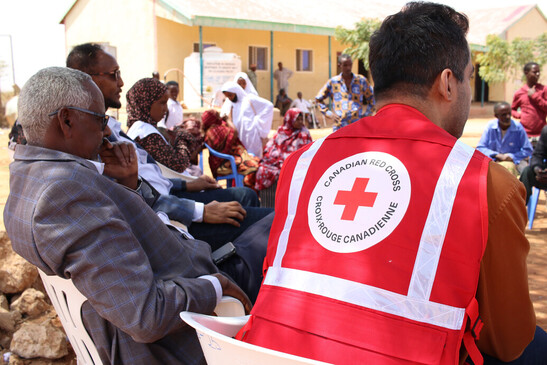
(Photo credit: Angela Hill / IFRC)
In countries around the world, Red Cross Red Crescent National Societies are on the ground every day providing a range of services – including disaster relief, health and social programs – to their communities. They are the backbone of the Movement.
As part of the Red Cross and Red Crescent Movement, the Canadian Red Cross has a long history of working with these National Societies as they prepare for, respond to and recover from emergencies. Our work is guided first and foremost by the humanitarian principle of “do no harm”, and we apply an intersectional lens to ensure we are accounting for the differing needs of diverse groups.
The Canadian Red Cross puts supporting the local National Society at the centre of all our international work. They are the lead on any emergency responses in their country, and are best placed to know how to help their communities. The Canadian Red Cross prioritizes providing relevant, timely and quality support that meets National Societies’ needs.
Our work is coordinated with the larger Red Cross Red Crescent Movement – including the International Federation of Red Cross and Red Crescent Societies (IFRC), the International Committee of the Red Cross (ICRC) and National Societies – ensuring an approach that emphasizes partnership and collaboration.
This work is made possible thanks to the continued support of donors, as well as the Government of Canada and other partners. Donations to our International Disaster Relief Fund and International Programs Fund allow us to remain flexible and provide funding where it is needed the most. Learn more about how we’ve used these funds to help people around the world.
Learn more about our work by visiting our Annual Report and Vision 2025 strategy.
Canadian Red Cross international impact
- 7.8 million people reached.
- More than $52 million in financial contributions to Movement partners.
- 79 humanitarian experts deployed to 27 countries.
- 39 programs operated in 27 countries.
- 13,000 emergency supplies sent.
- Health services expertise and equipment deployed five times
Stats reflect impact from April 2023 to March 2024.
Supporting before, during and after emergencies
The disaster cycle
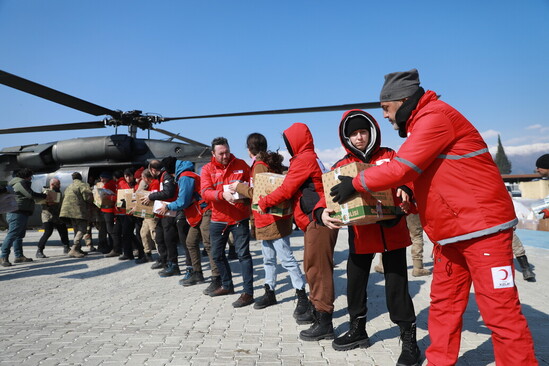
(Photo credit: Turkish Red Crescent / Anadolu Ajansı)
The Canadian Red Cross works with local National Societies before, during and after emergencies to ensure we are effectively and efficiently supporting people and communities impacted. We focus on locally led action, ensuring the responding National Society is at the centre of all the work we do. The Canadian Red Cross is a global leader within the Red Cross Red Crescent Movement in the areas of preparedness for effective response, operational leadership and health in emergencies.
Across all our work, we strive to respond in an environmentally friendly way, recognizing that how we respond has local and global impacts. We also understand that violence, discrimination and exclusion are interlinked and impact how different groups of people experience emergencies. As such, our work ensures dignity, access, participation and safety for all people, in a gender-inclusive, non-discriminatory and equitable manner.
The Canadian Red Cross supports communities before, during and after emergencies. It’s important to note though that these cycles can and do overlap, especially when countries are faced with overlapping crises.
Before
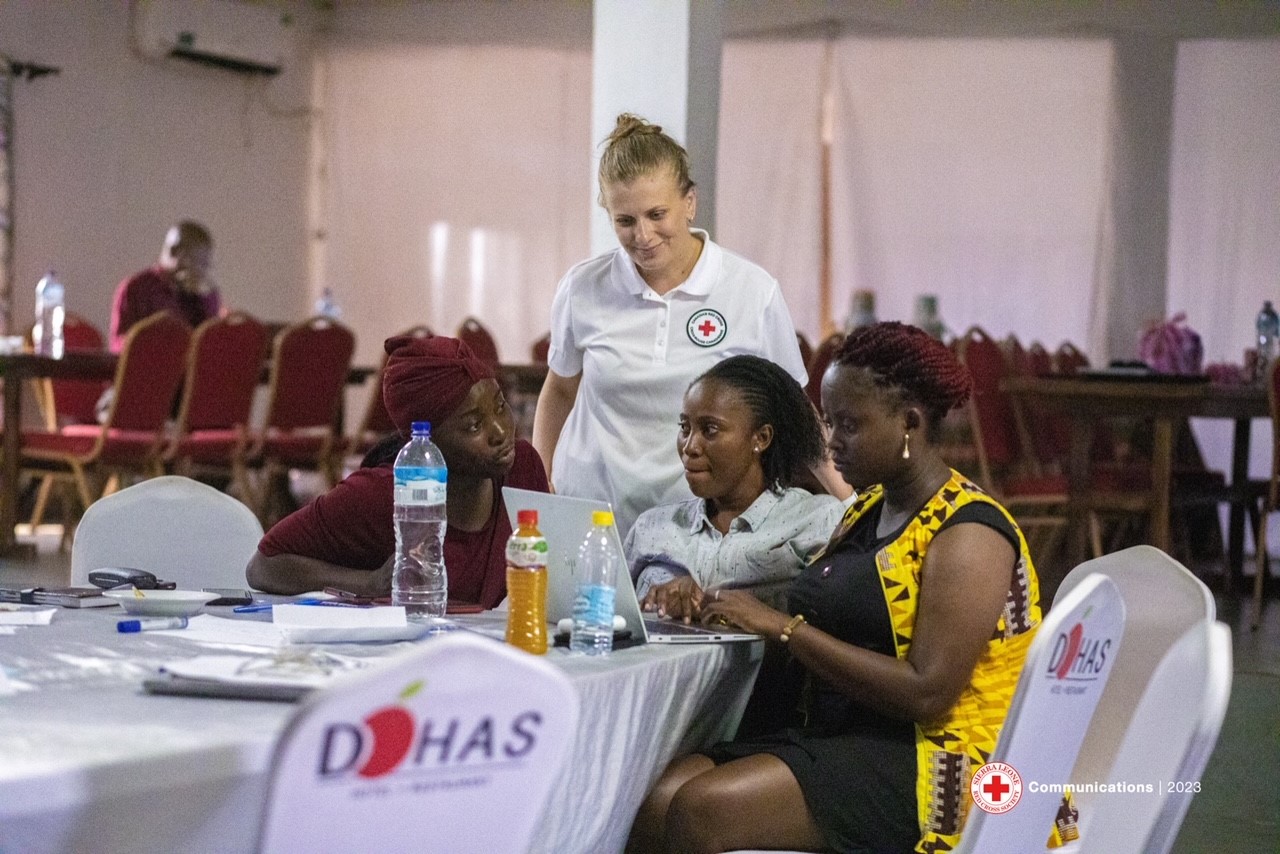
(Photo credit: Sierra Leone Red Cross)
We know emergencies happen, so we work with local National Societies to help strengthen their ability to respond with their own personnel and tools before an emergency strikes. Through established partnerships, this work includes developing systems and procedures that enable a National Society to respond quickly, training volunteers, and engaging with communities to better understand their needs. We also look at ways to reduce and mitigate risks when an emergency hits. This might include, for example, pre-positioning stocks in areas expected to be most heavily impacted by a forecasted hurricane, to ensuring people impacted have the supplies they need in the immediate aftermath.
The Canadian Red Cross also ensures our own processes, people and equipment are ready to respond at a moment’s notice when our Movement partners require support.
In action: The Sierra Leone Red Cross Society has a key role to play with government and other stakeholders throughout the disaster response cycle. In 2023, the Canadian Red Cross supported the Sierra Leone Red Cross in conducting a Preparedness for Effective Response assessment to see how they could be better prepared for emergencies. One of the key findings was that the National Society needed to develop a national response plan, which Canadian Red Cross has been supporting with. This plan is helping Sierra Leone Red Crescent Society identify how to respond when various emergencies happen, ensuring they have the right processes in place.
During
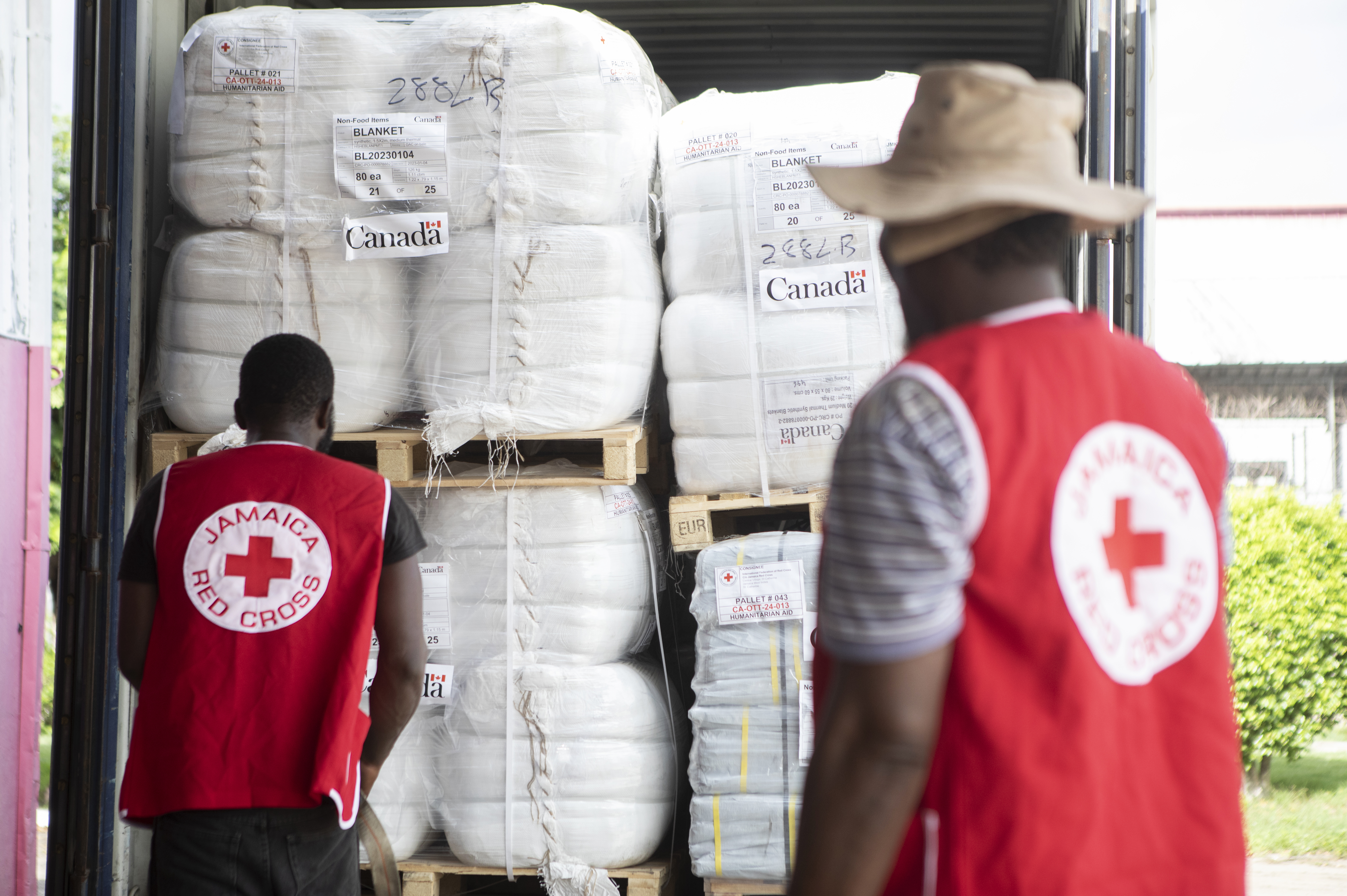
(Photo credit: IFRC)
When a local National Society is unable to respond to an emergency on their own, they may request international assistance from Movement partners. The Canadian Red Cross and other Red Cross Red Crescent National Societies can then step in to support. The Canadian Red Cross maintains a number of tools that allow us to respond quickly and effectively when requested as part of our disaster and emergency management. These include emergency health services, humanitarian relief items, humanitarian experts and funds. We also invest in the response system to ensure we can channel our support to where it is needed most in a timely manner.
In action: In July 2024, Hurricane Beryl made landfall as a category-4 hurricane, impacting countries across the south-eastern Caribbean. The hurricane impacted Grenada, St. Vincent and the Grenadines, Barbados and Jamaica, causing severe damage to infrastructure, services and livelihoods. Local Red Cross staff and volunteers worked to pre-position supplies and provided immediate support once the hurricane hit. With a history of collaborating with Red Cross National Societies in the region, the Canadian Red Cross, with the support of the Government of Canada and the generosity of donors, provided funds and personnel to support the IFRC’s response. We also sent emergency relief items from the Government of Canada’s stocks – including blankets, kitchen sets and shelter toolkits, to support the Jamaican Red Cross.
After
After the initial emergency phase, the focus moves to providing longer-term recovery support and partnership. This includes rehabilitating and rebuilding damaged systems and infrastructure, such as water, sanitation and health facilities, with the aim of building systems that are more resilient to future emergencies. It also involves working with the local National Society to strengthen their ability to respond to future emergencies.
The needs of those impacted live on beyond the initial emergency phase. As a Movement we support people impacted in their long-term recovery as they get back on their feet.
In action: Infectious diseases often become a risk after disasters when people are forced to flee their homes, and water and sanitation systems are impacted. The Syrian Arab Red Crescent recognized this, and as part of our support to them following the 2023 earthquakes, asked for help increasing their capacity in public health in emergencies. In 2024, the Syrian Arab Red Crescent, with support from the Canadian Red Cross, held the first national Public Health in Emergencies training in Syria to help them be better prepared to respond to health emergencies.
Our areas of expertise
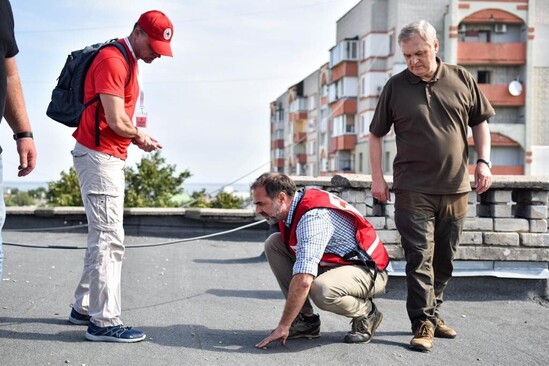
(Photo credit: Canadian Red Cross)
The Canadian Red Cross has a long history of collaborating with Red Cross Red Crescent Movement partners to support people impacted by disasters, emergencies and protracted crisis. Recognizing that that violence, discrimination and exclusion can increase during emergencies, our approach works to ensure that services are provided in a dignified way, are accessible to those who need them, include the participation of those impacted, and ensure safety for all people, in a gender-inclusive, non-discriminatory and equitable manner.
Within the wider Movement, the Canadian Red Cross is known for our expertise in five key areas:
Health: The Canadian Red Cross is a global leader in health in emergency response. We maintain our rosters of technical experts, medical equipment, systems and processes to allow us to deploy to support National Societies in health as quickly as needed.
Shelter, construction, engineering, and water, sanitation and hygiene (WASH): The Canadian Red Cross designs and delivers shelter solutions across the response cycle to households or communities who have damaged or destroyed homes due to disasters or conflicts. We also have an expertise in providing project management, design, training and construction for infrastructure projects to ensure communities or organizations affected by disasters are rebuilt in a way that increases resilience and reduces risks from future crisis.
Protection, Gender Equality and Social Inclusion, and Community Engagement and Accountability (PGIE): The Canadian Red Cross uses an intersectional lens to assesses the impact of emergencies on diverse groups of people. We seek to engage people of diverse backgrounds in defining and leading local solutions, and ensure that Canadian Red Cross services are designed and delivered to effectively meet the diverse needs of those impacted by emergencies. We also work to ensure the rights of individuals are respected, that we limit people’s exposure to the risks of violence and abuse, and that Canadian Red Cross services “do no harm”. Additionally, we deliver specific protection and gender-equality programming before, during and after an emergency.
National Society strengthening: Local National Societies are the best placed to respond to emergencies and crises, which is why the Canadian Red Cross puts a focus on working with our National Society partners to help them achieve and maintain a sustainable organization able to deliver relevant, quality and accessible services. Working in close collaboration, our support can include assessment, planning, developing systems, improving processes and procedures, and providing technical training and expertise. All of this is aimed at strengthening National Societies capacity to respond to emergencies both now and in the future.
Operational leadership: The Canadian Red Cross has a particular strength in sending operational leadership to support Red Cross Red Crescent Movement responses around the world. In training humanitarian leaders, we put a focus on elevating women and regional responders into leadership positions.
Where we work
The Canadian Red Cross aims to be a multiplier of impactful, locally led humanitarian action before, during and after crises. Our teams work to contribute to more inclusive, dignified, healthy, safe, resilient, and sustainable communities. We aim to alleviate suffering of those impacted by disaster and crisis.
Learn about our work in Africa, the Americas, Asia-Pacific, Europe, and Middle East and North Africa regions.
Responding to emergencies
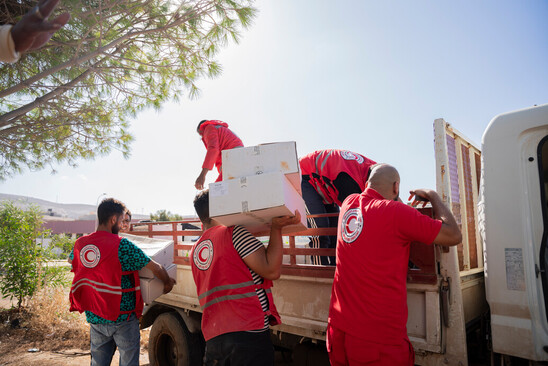
(Photo credit: Libyan Red Crescent)
The Canadian Red Cross works with our local Red Cross and Red Crescent Movement partners to support people impacted by emergencies, protracted crises and conflict around the world. With generous support from donors and the Government of Canada, we maintain a variety of tools that enable us to respond quickly and effectively when our Movement partners need.
Learn more about how we respond to emergencies around the globe.
Current emergencies
Learn more about how we’re responding to two current emergencies and how you can help:
Middle East humanitarian crisis

(Photo credit: IFRC)
The ongoing conflict in Israel and the occupied Palestinian territory, including Gaza, is impacting millions of people and generating unimaginable humanitarian needs, further exacerbating an already complex and protracted large-scale humanitarian crisis in the region.
Humanitarian Crisis in Ukraine

(Photo credit: IFRC)
The escalation of the international armed conflict between Russia and Ukraine over the past three years has had widespread and devastating humanitarian impacts.
Find more information about our current emergency responses in Canada and around the world.
